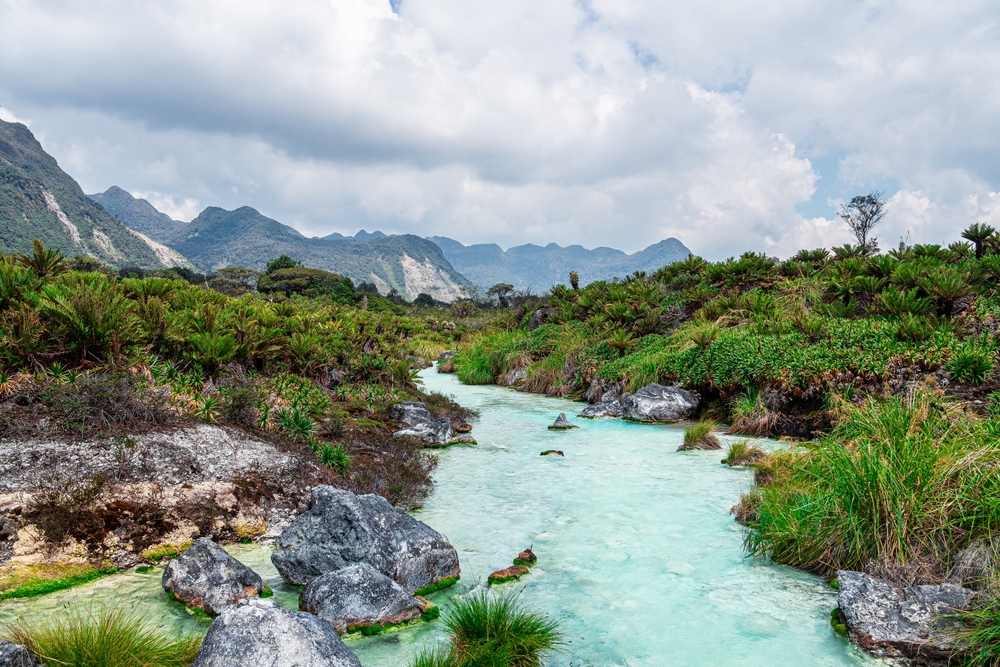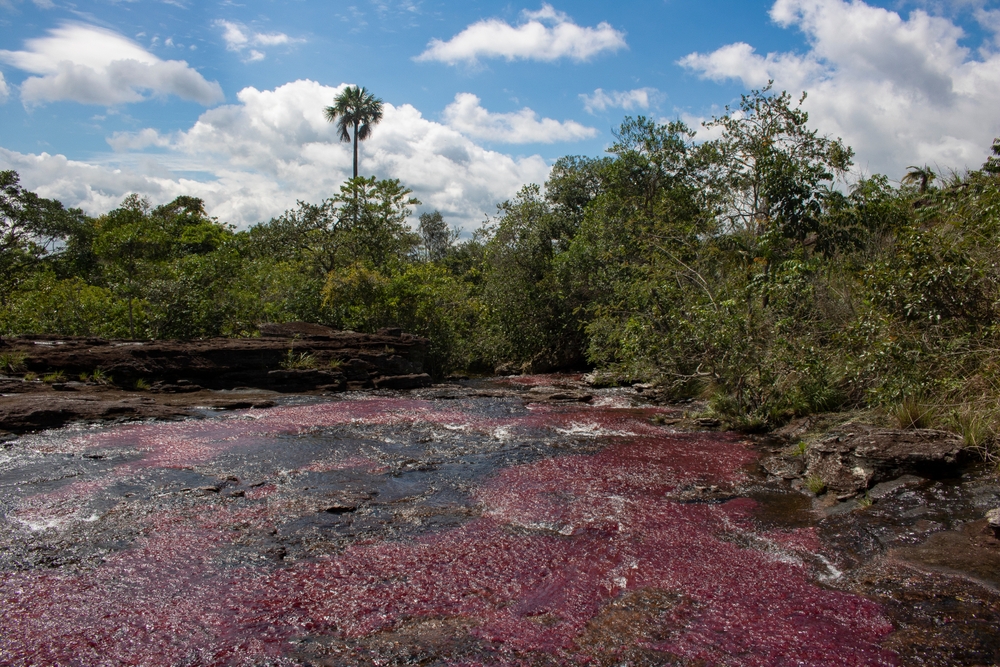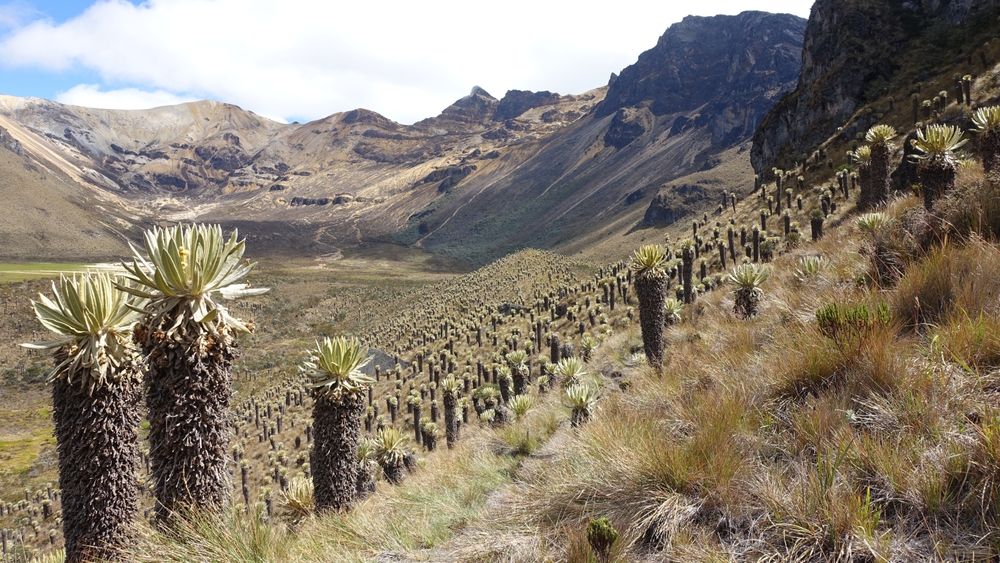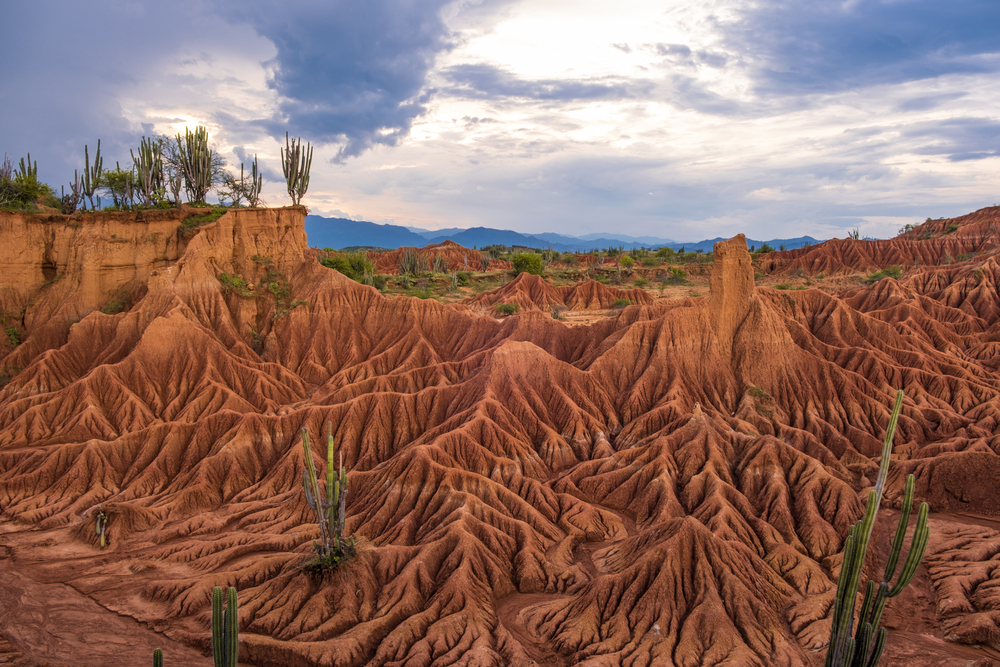Sierra Nevada de Santa Marta Overview
Sierra Nevada de Santa Marta National Park, known as Parque Nacional Natural Sierra Nevada de Santa Marta in Spanish, is located in northern Colombia, near the Caribbean coast.
Spanning approximately 1,790 square miles (4,652 square kilometers), this protected area is unique as it encompasses the world’s highest coastal mountain range. Rising dramatically from sea level to peaks exceeding 18,700 feet (5,700 meters), including the towering Pico Cristóbal Colón and Pico Simón Bolívar, the park features an extraordinary range of ecosystems.
Lush tropical rainforests thrive at lower elevations, while cloud forests, páramo landscapes, and glacial peaks dominate the higher altitudes. Numerous rivers, such as the Don Diego and Palomino, originate from the Sierra Nevada, providing water for surrounding communities and rich biodiversity.
The park’s diverse landscapes support a remarkable array of flora, with thick jungles of towering ceiba trees, bromeliads, and orchids decorating the humid lower elevations. As the altitude increases, the vegetation transitions into dense oak forests and montane cloud forests draped in mosses and ferns.
The páramo zone, found at higher elevations, is characterized by frailejones, unique high-altitude plants adapted to the harsh environment. With this extreme variation in climate and terrain, the park is home to an extraordinary variety of wildlife, many species of which are endemic. Visitors may spot jaguars, pumas, and ocelots moving stealthily through the forests, while tapirs and red howler monkeys inhabit the lower and mid-elevation regions.
The Andean condor, a symbol of South America, soars over the peaks, while rare birds such as the Santa Marta parakeet and Santa Marta bush-tyrant are only found within this isolated mountain range.
Sierra Nevada de Santa Marta National Park is not only a biodiversity hotspot but also a site of profound cultural significance. The region has been home to indigenous groups such as the Kogi, Arhuaco, Wiwa, and Kankuamo for centuries.
These communities continue to live within the park, preserving their traditional ways of life and protecting sacred sites. The archaeological site of Ciudad Perdida, an ancient city predating Machu Picchu, draws adventurous travelers seeking to trek through dense jungle to reach its terraced ruins.
The Lost City trek is among the most sought-after experiences in the park, leading visitors through waterfalls, river crossings, and steep jungle paths while learning about the history and customs of the indigenous people.
Beyond hiking, the park offers various ways to explore its landscapes. Birdwatching enthusiasts visit to observe some of the nearly 600 bird species, while ecotourism lodges provide sustainable accommodations for those seeking immersive nature experiences.
The park’s rivers offer opportunities for tubing, swimming, and wildlife spotting. Despite its incredible natural wealth, Sierra Nevada de Santa Marta faces conservation challenges, including deforestation, climate change, and illegal activities such as poaching and logging.
However, conservation initiatives led by indigenous communities, environmental organizations, and the Colombian government have made progress in preserving its ecosystems. Efforts to protect key species, reforest degraded areas, and promote sustainable tourism continue to shape the park’s future.
Park Map
Sierra Nevada de Santa Marta National Park Highlights
Share your clicks with us
Related National Parks More Colombia

Purace National Park

Serranía de los Churumbelos Auka-Wasi National Park

Serrania de la Macarena National Park

Pisba National Park

Paramillo National Park

Serrania de Los Yariguies National Park

Serranía de Chiribiquete National Park

Sanquianga National Park

Nevado del Huila National Park











































































